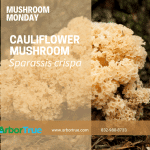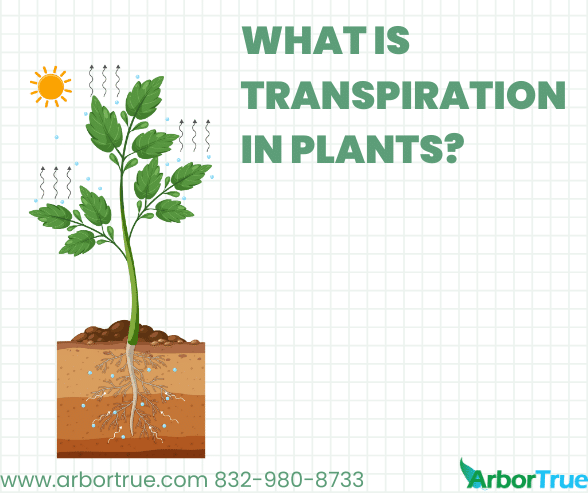
Three Climate Resistant Trees For Houston, Texas
August 21, 2024
Mushroom Monday: Cauliflower Fungus (Sparassis crispa)
August 26, 2024
What is Transpiration in Plants?
You may have heard the term transpiration as it relates to water and plants. In today’s post, we are going to look at the idea and give you some information about it.
What is Transpiration?
In a basic sense, transpiration is water leaving a plant. Plants absorb water through their roots, the water travels through the plant performing various functions, and the excess is released through the leaves. This is transpiration. Plants only use a small amount of the water they absorb. The rest is transpired.
How Does Transpiration Work?
There is a lot to how a plant functions. In a basic sense, a plant absorbs water through the soil via its roots. This water goes up through the plant via the xylem. It is used in the plant for various purposes. The excess amount goes to the leaves where it exits the plant through openings referred to as stomata.
There are a lot of mechanisms at work, but in a sense, when water leaves a plant through its leaves, this creates suction that draws water up through the roots. This is why water moves up through a plant.
Where do Plants Transpire From?
Plants transpire from their stomata, their cuticles, and their lenticels.
The stomata are openings on the bottom side of leaves. They open to take in CO2 during photosynthesis. Water mainly transpires from the stomata.
The cuticles are a wax layer on leaves. Water can evaporate from this layer. If the stomata are closed, more water can leave through the cuticles.
Some plants have bark that has openings called lenticels. Some water can leave a plant through these openings, although the amount is small.
What Affects Transpiration?
A number of things will impact how much a plant transpires. Some of them include:
- The plant species – Different species of plants have varying rates of transpiration. For example, a plant that is native to an area with low precipitation may transpire less than one that is native to a wetter area, all else being equal. Additionally, different plants have different leaf structures, and the structures can affect the rate of transpiration.
- The soil – The type of soil can affect transpiration rates because the type of soil can affect the moisture in the soil and the ability of a plant to absorb water from it. For example, clay soil can hold more water than sandy soil, all else being equal. Generally, if there is less water in the soil, transpiration will decrease.
- The sun – The amount of sunlight and how bright it is can affect transpiration. Generally, the more and brighter the sunlight, the more a plant will transpire, if everything else is the same. Additionally, stomata are open in the daytime and closed at night.
- Precipitation – This affects humidity and soil moisture, which both have an impact on the rate of transpiration.
- Humidity – Under otherwise the same conditions, the more humid it is, the less a plant will transpire. The less humid, the more it will transpire. This is because water can more easily evaporate if the air is dryer than if it is wetter.
- Temperature – The rate of transpiration increases with temperature. One reason for this is that when the temperature is higher, stoma in plants open more, and when temperatures are lower they close. The more open the stoma, the more the plant can transpire.
- Air pressure – More water can transpire when air pressure is lower than when it is higher, all else being the same.
- Wind – When it is windier, all else being equal, a plant will transpire more than when the air is still. This is because the wind can increase evaporation from the stomata and that can increase transpiration.
What are Some Effects of Transpiration on a Plant?
Transpiration can have a number of effects on a plant. Transpiration releases excess water, draws water up from the roots (which works in functions of plants), has a cooling effect on the plant, helps to keep plant cells rigid, helps leaves to stay moist, releases energy, and helps with plant growth among other effects.
Can Transpiration Be Measured?
There are some ways to measure transpiration. One way is with a device known as a lysimeter. It is basically a container on a scale that is placed in the ground. Plants are put in it and irrigated. The whole thing is weighed and then weighed over two days. The reduction in weight over those days is equal to the amount of water that evaporated and transpired.
If you found learning about transpiration in plants useful, check out the other posts on our TrueTreeTalk blog. Also, follow us on Facebook to keep up with these and other posts.
* * *
ArborTrue is a science-based tree-service company in the greater Houston area. We also serve Austin and other parts of Central Texas. We provide a range of services including tree trimming, tree pruning, tree removal, tree planting, arborist consultations, and more. Call us today at 832-980-8733 (Houston) or at 512-546-3833 (Austin) or reach out to us online to schedule an appointment.




